
“Everything the same?” This is how Scott Landon, one of many writer characters in the written works of Stephen King, greets his wife, Lisey, when coming home from a hard day of catatonic gazing by the dream pool. Like many creative people, he’s half in this world and half out. His favorite haunt is Boo’ya Moon, a mystical realm, like Never Never Land only scarier and potentially more lobotomizing. It’s the human imagination, literalized as a place of peril and wonder, and it’s only ever a blink away.
Like Scott, fans streaming Lisey’s Story, the eight-episode Apple TV+ miniseries, may be wondering: is everything the same? How does the TV adaptation of Lisey’s Story differ from the book? Is it any good? Now that the series has concluded, we can address those questions.
Of all the novels King has written, he’s cited Lisey’s Story as his favorite, with the understanding that favorites are subject to the whims of fluctuating taste. The story was close enough to his heart that he wrote the teleplays for the series adaptation on spec before shopping them around and eventually landing at Apple with J.J. Abrams and Bad Robot.
Lisey’s Story aired its final episode on Friday, and now we’re left to look over it and compare and contrast the final results to the book (or, in this reviewer’s case, the audiobook, narrated by Mare Winningham, who co-starred in another King adaptation last year on HBO).
As they say in the novel: SOWISA. Strap On Whenever It Seems Appropriate. And now is appropriate for turning on the water faucets and taking a book-to-screen ride to Boo’ya Moon. Grab Chekov’s shovel and sharpen it: you’ll need it for the constructive criticism that’s coming. Major spoilers are guaranteed from this point onward.
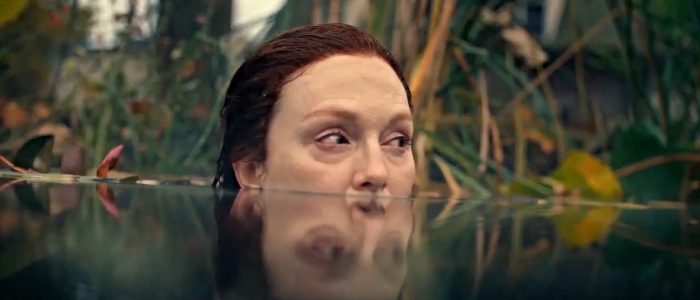
Lisey’s Story is Told in the Same Slow “Lisey-Time” as the Book
One of the best films of the 2000s is Alfonso Cuaron’s Children of Men, an immersive cinematic feat with technically adroit, one-shot car ambushes…which continue to be influential on other Apple TV+ titles like the Russo Brothers’ Cherry. Lisey’s Story reunites the two stars of Children of Men, Julianne Moore and Clive Owen, for a flashback-heavy series that sees King going back to the well of #1 fans and words written backward in blood on the wall. Instead of “Redrum,” it’s “Help me Lisey.”
Moore plays the titular Lisey and Owen plays Scott. If you were perplexed by the SOWISA reference, not to worry. The screen adaptation of Lisey’s Story ditches most of the book couple’s baby talk, though we still get some of that here with handwritten notes like, “Babyluv – Bunny will help you. Bool!”
King’s philosophy when writing that was that every marriage has its own internal language, and some have husbands who regress to a childlike state. It helped give us a window into Lisey’s inner life, her memories of the marriage. Unfortunately, it got old after a while and came off like too much of an inside joke, resulting in awkward, belabored, esoteric lines like, “Smuck that, babyluv” and “In a situation like this you either strapped it on or you didn’t.”
If it seems like I’m being hard on Lisey’s Story already, that criticism comes from the tough-love corner of a King fan who believes all things serve the Beam. Which is to say, the Stephen King multiverse is rich with innumerable pleasures, yet also rife with hit-or-miss ideas and occasional, nay, frequent “literary elephantiasis,” as King himself has called it.
Consider the following excerpt from Lisey’s Story, the book, which offers a meta-commentary on Lisey’s Story, the TV series:
“He goes down, the Pulitzer Prize winner goes down, Scott Landon goes down, and Lisey makes the supreme effort to break out of that slow and terrible Lisey-time.”
He goes down. Got it. In a script, that’s all the telegraphic screenwriter would need to write to describe the action of what would be happening onscreen. Short, sweet, and to the point.
King is, first and foremost, a novelist, so he prefers to take the scenic route, and Lisey’s Story offers no shortcuts. It never does quite break out of the self-described “maddening slow-speak of Lisey-time,” which allowed the master of the macabre to stretch out the description of Scott’s shooting to a 30-page scene in the book.
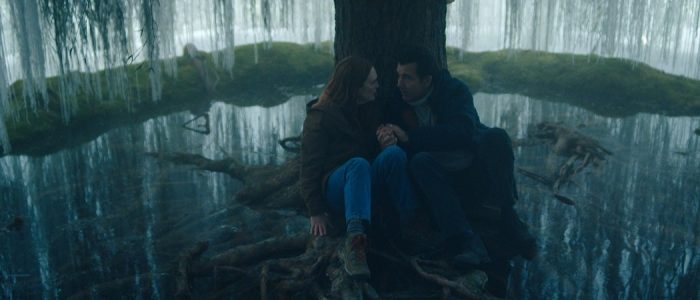
The Title is Somewhat Misleading – This Isn’t Really Lisey’s Story
For viewers unaccustomed to reading Hollywood screenplays, 30 pages of one would traditionally equal about 30 minutes of screen time. Imagine watching Scott Landon be nearly assassinated, in slow-mo for 30 minutes, at the same protracted groundbreaking ceremony for a college library, overseen by a prof and “Incunk” named Woodbody or Woodsmucky, with an “only semi-believable Louisiana drawl,” to quote King’s knowing appraisal of his own book caricature.
It wouldn’t work, gentle reader. To his credit, King understands this. After all, he is the one who penned all eight scripts for this streaming series so he is the one making the choices about which darlings to kill and what to include or not. To wit: the annoying affectation of having Scott and Lisey say “smuck” instead of the f-word might not have translated as well to the lips of real people. Nor would it do to have Ron Cephas, a Black actor, spout book lines like:
“Yew’ll finish yoah remarks, and there’ll be anothuh round of applause. Then, Mistuh Landon…”
Reminder: it was King who created the Christ-like yet questionable character of John Coffey in The Green Mile. Coffey, in turn, helped inspire filmmaker Spike Lee to popularize the term “the super-duper magical Negro,” in reference to a Black screen character who is only there to aid the white character(s), sometimes with supernatural healing powers.
The two main human faces in Lisey’s Story are the aforementioned Moore and Owen, and they have a natural chemistry as actors that has not dimmed in the 15 years since Children of Men. Lisey’s Story also reunites Moore with Jennifer Jason Leigh, herself a recent audiobook narrator. Leigh helped sow identity confusion with Moore as Hitchcock-like blondes, this year, in Netflix’s middling The Woman in the Window.
The other sister — there are three here instead of five like in the novel — is Amanda, played by Joan Allen. Amanda is the institutionalized (shout-out to Shawshank) woman caught between two worlds. Allen is a long way from her Oscar-nominated work in ’90s and ’00s films like The Crucible and The Contender; but it’s good to see her again, even if she’s sometimes saddled with the thankless task of sitting on stone steps and staring off into the moonrise like a “deep-space cowgirl” (to paraphrase Scott’s own term for obsessive fans like Gerd Allen Cole, the Mark David Chapman-esque guy who shot him).
Dane Dehaan plays Jim Dooley, a Misery-lite stalker who microwaves and mailboxes a crow (instead of the book’s cat), thereby giving new meaning to the collective noun: “a murder of crows.” If it seems like we’re losing sight of Lisey amid the ensemble cast, maybe there’s a reason for that.
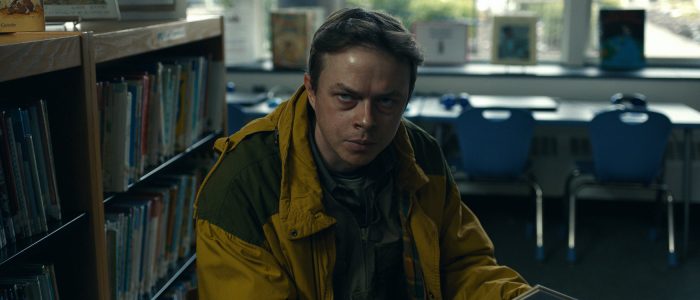
Dooley the Deep-Space Cowboy is Scott Landon’s #1 Fan
Lisey’s Story began life in 2004 as “Lisey and the Madman,” a short story/novel excerpt, published in McSweeney’s Enchanted Chamber of Astonishing Stories. That anthology, edited by novelist and screenwriter Michael Chabon, remains a good contender for a desert-island book, assuming you’re the kind of constant reader who likes literary page-turners and believes that King delivers his best work sometimes in novella and short story form. In the anthology, “Lisey and the Madman” came right after Steve Erickson’s “Zeroville,” a conceptually brilliant short story that we’ve discussed here in the past.
In his quest to retrieve the dead Scott’s papers and share them with the world, Dooley wanders around like a “gorked-out goner” who fell off the back of the Dane Dehaan incel truck. Like Amanda and Scott — both of whom engage in self-harm in an effort to cut out “the bad gunky” — Dooley is rather zombified. He sports a yo-yo, as if Dehaan felt it necessary to give the character some identifiable quirk.
Lisey’s Story introduces him in a brand-new scene set in children’s library, and there’s a cloud of menace hanging over him right from the get-go. He’s more openly hostile and misogynistic than his book forebear, who comes across as less intelligent but superficially friendlier, more diplomatic, to the widow of his favorite author (at least at first).
If there were ever any doubt that Lisey’s Story is a horror drama, the fourth episode eliminates that when it suddenly turns into a violent home invasion thriller like Funny Games. Dooley brutalizes Lisey with his fists and a pizza cutter (instead of the book’s can opener). Thankfully, all Landons are fast healers and Lisey need only bathe in the waters of Boo’ya Moon to recover.
There’s no more justice for Han than there is in the Fast and the Furious film franchise. Sung Kang dies in his police car at Dooley’s hands. We eventually learn that Dooley roomed with Gerd Allen Cole, the university shooter, in a mental hospital. That’s why he’s so obsessed with Lisey’s husband.
In the book, we don’t spend much, if any, time alone with Dooley and his cardboard cutouts of Scott Landon. Everything is shown or told from Lisey’s perspective. The miniseries struggles with this: how can it portray Lisey’s inner life, like in the paragraphs and pages of the prose version, without resorting to the cinematic no-no of voiceover? An advocate of pure cinema, pictures in motion, might want to eschew voiceover in favor of visuals. Note that proponents of “good voiceover” are always wont to lift up classics like King and Frank Darabont’s own The Shawshank Redemption as exceptions to the rule.
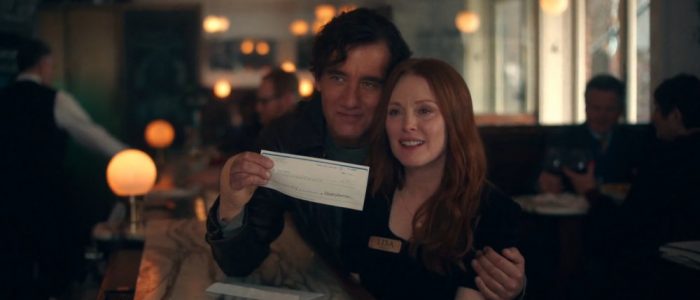
“The Spouses of Well-Known Writers Are Almost Invisible”
Lisey’s Story uses the power of visualization to travel back and forth between Earth and Boo’ya Moon, and the series recognizes that it needs to give us a visual presentation of her thoughts. At one point, there is a bit of voiceover as Lisey reads a letter, but the series mostly tries to solve the show-don’t-tell predicament by having Moore’s character stand around or remain outright sedentary next to her swamp-like swimming pool.
There, she flashes back and entertains flashbacks within flashbacks. One episode literally ends with Lisey sitting poolside, staring off into space. The next episode begins with her…sitting poolside, staring off into space.
There is entirely too much toggling back and forth between the past and the present. All the cross-cutting in the world can’t save this grieving widow from the otherwise static state of her life outside her mind palace. Why keep showing Lisey in the present when there’s nothing happening there? Is it because the series thinks we need to have her as a visual anchor?
Unlike fiction, where the past tense is more common, screenplays are usually written in the present tense, the idea being that film lives in the eternal now. In Lisey’s Story, the past lives at the expense of the present. If you wrote a logline or recap for the events of the fifth episode, it might read:
Lisey sits by the poolside, remembering. 45 minutes later, she stands up from her chair and goes into the house to retrieve a shovel. Then, she gets into the pool and swims to Boo’ya Moon.
Here, Scott doesn’t possess Amanda and talk to Lisey through her in bed, like he does in the novel. However, Lisey does projectile-vomit Boo’ya water into Amanda’s mouth, and this arouses Amanda from her hospital stupor.
The tone vacillates wildly in the doctor’s office, where Lisey and Darla must employ flattery to make it through Amanda’s exit interview. The book skipped over this part and left Darla out of it; Lisey absconded with Amanda on her own and called the doctor from her car. Outside the hospital, the sisters start acting loopy, like they’re drunk on each other’s presence. At one point, they climb up on a picnic table in the rain and yell, “Let’s f**king kill him,” meaning Dooley.
Dooley invades Lisey’s home again, cutting the power and donning a pair of night-vision goggles that make him look like the Longboy: a horrific creature made up of the writhing souls of the damned on Boo’ya Moon. Lisey’s big plan is to tackle Dooley and teleport him there, where the Longboy will eat him. She devises a code word, Greenlawn, to alert her sisters when they can come out of hiding and all dog-pile on Dooley together.
We see more sickening violence against women, but the plan mostly works, and Lisey and Dooley soon shuttle off to Boo’ya Moon. Dooley headbutts Lisey, breaks her wrist, and bites her before finally biting the big one himself.
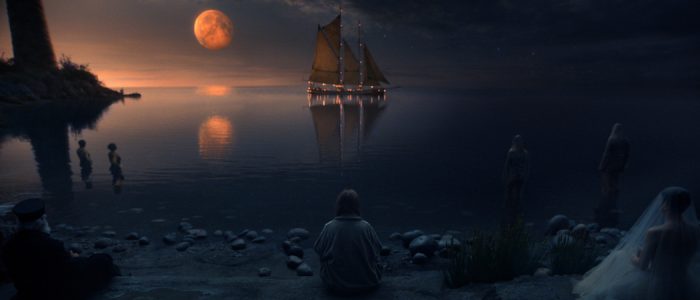
Lisey’s Story is a Jam-Packed Suitcase That Won’t Close
King has likened the process of book-to-screen adaptations as “sitting on a suitcase syndrome…where you try to pack in all the clothes at once and the suitcase won’t close.” Lisey’s Story shows that, with some tales, it’s better to travel light.
There’s enough story here to justify maybe four or six episodes, not eight. King could have compressed the novel but instead, he translates it and it doesn’t always translate well. The TV conversion just doesn’t play to his strengths as a writer. Most of Lisey’s all-consuming flashbacks are focused on her life with her late husband, and this is key: the title, “Lisey’s Story,” refers to a story that Scott wrote for Lisey. It’s his story, dedicated to her.
This is nowhere more evident than in the Scott-centric finale, which chooses to end the series with a confession of patricide from a Pennsylvania farm boy, whose father tells him, “You better make up a good story.” He does that and, for the first time in his life, he gets paid for it, with one of his father’s old co-workers handing him two dollars. A downpayment on a writing future.
Speaking of Funny Games, the real highlight, acting-wise, in Lisey’s Story winds up being Michael Pitt, who is virtually unrecognizable at first as Scott’s alcoholic father (the Jack Torrance of this tale). His final resting place is a well, like the ill-fated spouses in Dolores Claiborne and 1922. It’s not until he looks up in the rain, like Andy Dufresne in The Shawshank Redemption, that we finally get a good look at his face. I was legitimately shocked when I realized it was Pitt whose shadowy eyes were hidden behind all that long hair.
It’s only at the very end, after Scott has shared all of himself with Lisey from beyond the grave and she’s made her peace with losing him, that the episode tacks on a memory of Lisey playing with her sisters on their homemade ship, the Hollyhock. “Wife and sister:” are these the only roles that define her? She only seems to exist in relation to her family.
Through it all, one can’t help but wonder what novelist Tabitha King must think. Good Morning America, and don’t call her “Stephen King’s wife.” She’s her own woman, but the same can’t always be said for Lisey.
The emotion of some scenes recalls Moore’s drugstore and lawyer’s office freakouts in Magnolia, where she’s hitting that hyper, hysterical register. “Don’t you call me lady!” She gives life to the character of Lisey, but too much of the time, Lisey’s narrative is centered on Scott and his own Frailty-esque backstory as a kid with an abusive father and a possessed brother.
In the book, Dad forces the three-year-old Scott to jump off a three-foot bench; in the show, it’s a barn roof. No wonder he grew up wanting to cut apologetic “blood bools” into his hand (with broken glass from a storefront window, instead of a greenhouse pane, per the novel).
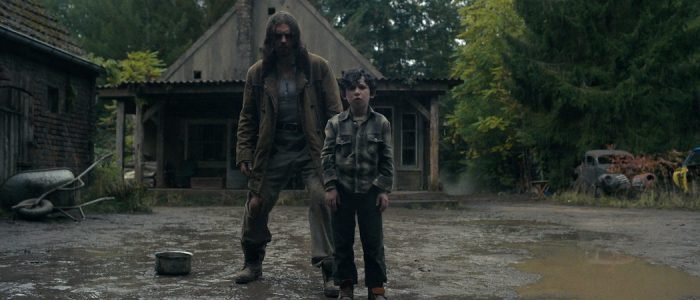
Bool! The End.
Scott forgets his celebration dinner with Lisey for his first published book (in the novel, he’s an established writer and it’s an Ingmar Bergman movie). He dies as a rock-star novelist with an actual star on his dressing-room door. First, he rolls up on an auditorium in a car with tinted windows and gets greeted by a mob of screaming fans, before choking on stage. It’s Beatlemania, and it’s King in his comfort zone, churning out another tale with semi-autobiographical writerly shadings.
Having helmed Jackie, another story about the grieving widow of a famous man (with Natalie Portman in the role of Jacqueline Kennedy Onassis), Lisey’s Story is also familiar terrain for director Pablo Larraín. The series has its moments: it looks and sounds great, thanks to cinematographer Darius Khondji and the mononymous composer Clark. You can see where there’s real artistic intent here, but beneath the veneer of a prestige drama, there’s a half-baked mythology and some truly ponderous storytelling that doesn’t always hang together in a way that flatters King’s grand ambitions as a writer.
The series is handsomely mounted and there are moments of true enchantment, such as when Lisey and Scott sit under the “yum-yum tree,” a snowy willow outside their ski resort. Lisey’s Story is not without levity, either, but it’s largely self-serious, overlaid with weeping violin strings that belie its childish logic and language. A Castle Rock lighthouse shines through the Landon barn but like Scott’s editor, the viewer might be inclined to feel: “It creaks a bit, old boy.”
Too often, Lisey’s Story disappears down the pit of its own fuzzy navel. “Grief is a bool hunt,” it tells us, and there’s a somber kind of solipsism to that statement. It really wants to mean something, but it doesn’t care to communicate that outside its own veiled jabberwocky.
The post ‘Lisey’s Story’ Spoiler Review: Maybe Stephen King is the Wrong Choice to Adapt Stephen King appeared first on /Film.
0 Comments